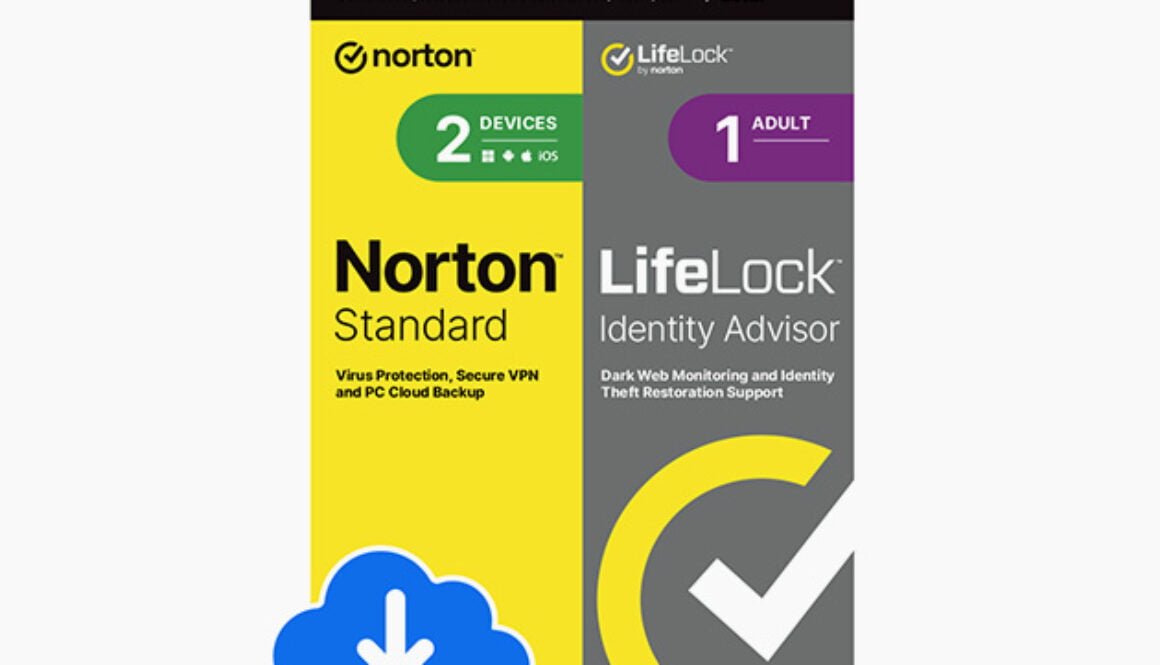Essential Steps to Write a Comprehensive Business Plan for Your New Venture
Essential Steps to Write a Comprehensive Business Plan for Your New Venture
As I embark on the exciting journey of launching my new company, I realize that a well-crafted business plan is essential. A comprehensive business plan not only serves as a roadmap for my startup but also communicates my vision to potential investors. It’s a document that defines my goals, outlines my strategies, and provides insight into my market analysis and financial projections. In this blog post, I will share the essential steps to write a business plan that resonates with investors and helps me achieve my entrepreneurial dreams.
The first step in crafting my business plan begins with a clear executive summary. This section is crucial because it encapsulates the essence of my business idea in a concise manner. I need to ensure that my mission statement is compelling and reflects my business model design accurately. From there, I’ll dive into thorough market analysis to understand the landscape in which my business will operate. Identifying my target audience, examining industry trends, and assessing competitors are all vital components of this research.
Next, I’ll focus on laying out a robust business strategy development plan that includes marketing strategies tailored for new businesses. This will involve detailing how I plan to attract investors and secure funding. My financial projections will play a pivotal role here, as they must be realistic and reflect both best-case and worst-case scenarios. As I outline my funding strategies, I’ll make sure to explain precisely how much capital I require and how it will be allocated.
Throughout this process, I’ll keep in mind the importance of goal setting for startups. Establishing clear, measurable objectives will not only guide my operations but also demonstrate to potential investors that I have a strategic vision for success. Risk management in business is another critical aspect I must address, as it shows that I am prepared for challenges that may arise along the way.
Finally, I’ll compile all sections into a cohesive document, making use of business plan templates for structure and clarity. Reviewing and editing my business plan will be key in ensuring that it effectively communicates my ideas and vision. With these steps, I’m confident that I will produce a comprehensive business plan that is not just a document but a powerful tool for my new venture.

Key Takeaways
- Executive Summary: Start with a clear executive summary that outlines your business vision and mission.
- Market Research: Conduct thorough research on your industry, target audience, and competitors to strengthen your market analysis.
- Financial Projections: Provide detailed financial forecasts, including income statements and cash flow projections for the next five years.
- Organizational Structure: Use an organizational chart to outline roles and responsibilities within your company.
- Clear Language: Avoid jargon; ensure your business plan is easily understandable by all potential readers.
- Appendix: Compile an appendix with essential documents to support your business plan.
Understanding the Importance of a Business Plan
A business plan is a formal document that outlines my business goals and the strategies I will implement to achieve them. It acts as a roadmap for my venture, detailing everything from market analysis to financial projections.
Benefits of Having a Business Plan
- Clarity: Writing a business plan helps me clarify my ideas and understand the steps needed to turn them into reality.
- Increased Success Rate: According to research, entrepreneurs with a formal business plan are 16% more likely to succeed compared to those without one.
- Attracting Investors: A solid business plan significantly improves my chances of securing funding from investors or banks.
- Crisis Management: Having a plan enables me to navigate challenges like economic downturns or cash flow issues effectively.
Common Misconceptions About Business Plans
- Only for Startups: Many believe only new businesses need a plan, but established companies benefit from regular updates.
- Too Rigid: Some think a business plan is inflexible; in reality, it can be adjusted as my business evolves.
- Time-Consuming: While it requires effort, the time spent on a business plan pays off by providing direction and focus.
Gathering Data to Inform Your Business Plan
When I set out to write my business plan, gathering data became a crucial step. I focused on several key areas:
Identifying Your Target Market
Understanding who my potential customers are is essential. I researched demographics, preferences, and behaviors. This helped me tailor my offerings effectively.
Analyzing Competitors
I took time to look at my competitors. By analyzing their strengths and weaknesses, I was able to find gaps in the market that I could exploit.
Understanding Industry Trends
Staying updated with the latest industry trends allowed me to foresee changes in consumer behavior. This knowledge is invaluable for positioning my business strategically.
Utilizing Surveys and Focus Groups
I also conducted surveys and organized focus groups. Feedback from potential customers provided insights that shaped my product development and marketing strategies.
Choosing the Right Structure for Your Business
When I set out to build my business, one of the crucial decisions I faced was choosing the right structure. The type of business model significantly impacts how I operate and grow. There are various models like B2B (business-to-business) and B2C (business-to-consumer). B2B focuses on selling products or services to other businesses, while B2C targets individual consumers. Each model has its unique challenges and advantages in terms of marketing, sales, and customer relationships.
Value Proposition and Unique Selling Points
Next, I considered my value proposition and unique selling points. This is what makes my business stand out in a crowded marketplace. Understanding what I offer that competitors do not is essential for attracting customers. Whether it’s superior customer service, innovative products, or competitive pricing, identifying these elements helps shape my business structure.
Revenue Streams and Pricing Strategy
Finally, I needed to outline my revenue streams and pricing strategy. Will I rely on direct sales, subscriptions, or advertising? Each revenue stream can influence the choice of business structure. Additionally, my pricing strategy must align with my target market’s expectations and my overall business goals. A clear understanding of these components ensures that my business structure supports sustainable growth.
Setting SMART Objectives for Your Venture
When I think about setting objectives for my venture, I always turn to the SMART framework. This method helps me ensure my goals are Specific, Measurable, Achievable, Relevant, and Time-bound. It’s crucial to define both short-term and long-term goals to create a balanced approach. For example, a short-term goal might be to increase website traffic by 20% over the next quarter, while a long-term goal could focus on building a customer base of 10,000 within five years.
Creating Measurable Objectives
Measurable objectives are vital because they allow me to track progress. I like to set clear metrics that indicate success. If my objective is to improve sales, I might specify a target increase of 15% within six months. This clarity helps keep my focus sharp and makes it easier to celebrate small wins along the way.
Aligning Goals with Your Vision and Mission
Lastly, aligning my goals with my vision and mission ensures that everything I aim for supports the bigger picture. Each SMART objective should reflect what my venture stands for. For instance, if my mission promotes sustainability, a goal might be to source materials from eco-friendly suppliers by the end of the fiscal year. This alignment not only motivates me but also builds a cohesive strategy for my venture’s growth.
Creating a Financial Plan to Ensure Viability
Estimating Startup Costs
When I start planning my new venture, the first step is estimating startup costs. This includes everything from equipment and inventory to marketing and legal fees. I make a detailed list of all potential expenses, ensuring no hidden costs slip through the cracks. Understanding these costs helps me set a realistic budget and avoid surprises later.
Projecting Revenue and Expenses
Next, I project my revenue and expenses. To do this, I analyze market trends and customer demand. I consider how much I expect to sell and the prices of my products or services. I also account for ongoing expenses like rent, utilities, and salaries. Knowing my expected income versus expenses allows me to plan effectively.
Cash Flow Analysis
Cash flow analysis is crucial in my financial plan. I track how money flows in and out of my business monthly. This helps me identify any shortfalls before they become critical issues. I ensure I have enough cash on hand to cover expenses while waiting for customer payments.
Break-even Analysis
Finally, I perform a break-even analysis. This tells me how much I need to sell to cover my costs. By calculating my fixed and variable costs, I can determine my break-even point. This knowledge is empowering because it highlights the sales targets I must achieve to ensure my business remains viable.
Summarizing Your Business Plan Effectively
When writing a business plan, the executive summary plays a crucial role. It’s often the first part that potential investors or partners read. Therefore, it’s essential to make it compelling and informative.
Importance of the Executive Summary
The executive summary is like a snapshot of your entire business plan. It summarizes my vision, goals, and how I plan to achieve them. This section should attract attention and encourage readers to dive deeper into the details of my plan.
Key Components to Include
- Business Overview: I describe what my business does, including products or services offered.
- Market Analysis: I highlight my target audience and the competitive landscape.
- Financial Projections: I provide key financial metrics that showcase potential profitability.
- Goals and Objectives: I outline what I aim to achieve within specific timeframes.
Tips for Writing an Engaging Summary
To create an engaging executive summary, I keep it concise and focused. Using clear and straightforward language helps ensure that my message is easily understood. I also recommend avoiding jargon unless necessary. Lastly, I make sure to revise and refine my summary multiple times to enhance clarity and impact.
Expanding on Each Component of the Plan
Company Description and Mission Statement
In my business plan, I start with a detailed company description that outlines what my business does, its goals, and the market needs it addresses. This section includes my mission statement, which reflects my core values and purpose. A strong mission statement can guide my decision-making process and inspire my team.
Marketing and Sales Strategy
I focus on my marketing and sales strategy to define how I will attract and retain customers. This includes identifying my target market, understanding consumer behavior, and planning promotional activities. I outline the sales process, pricing strategies, and distribution channels that I will employ to ensure my products or services reach potential customers effectively.
Operational Plan and Management Structure
The operational plan describes the day-to-day operations necessary for my business to function smoothly. I detail the production processes, quality control measures, and facilities needed. Additionally, I define my management structure, including roles and responsibilities, ensuring that everyone understands their contribution to the overall business goals.
Appendix and Supporting Documents
Finally, the appendix contains supporting documents that strengthen my business plan. This may include charts, graphs, legal agreements, resumes of key team members, and any other relevant information that investors or stakeholders might find useful. Having all this organized shows my thoroughness and preparedness.
Ensuring Accuracy and Clarity in Your Plan
When I draft my business plan, ensuring accuracy and clarity is vital for its success. One key step is to seek feedback from mentors and peers. Their insights can highlight areas I might overlook, helping me refine my ideas significantly.
Editing for Clarity and Conciseness
I always make it a point to edit my drafts for clarity and conciseness. This means simplifying complex sentences and removing jargon that could confuse readers. A clear plan communicates my vision effectively and ensures everyone understands my objectives.
Common Pitfalls to Avoid
- One common pitfall is being overly ambitious. I focus on setting realistic goals that are achievable.
- Another mistake is neglecting market research. I ensure I back my claims with data to enhance credibility.
- Lastly, I avoid vague descriptions. Specific details about my business model and target audience help clarify my intentions.
Effectively Communicating Your Vision to Stakeholders
When I present my vision to stakeholders, I focus on a few essential steps that make my message clear and compelling. Here are some tips that I find particularly effective:
Tips for Presenting to Investors
- Start with a strong opening that captures attention.
- Clearly articulate my vision and its potential impact.
- Share success stories or case studies to illustrate my points.
Using Visuals and Data Effectively
I believe visuals play a crucial role in conveying my vision. Graphs, charts, and infographics simplify complex data and enhance understanding. I ensure that each visual supports my narrative and is easy to read, making my presentation more engaging.
Preparing for Questions and Objections
Understanding potential questions and objections is vital. I prepare by anticipating concerns stakeholders may have and formulating clear, concise responses. This preparation not only boosts my confidence but also demonstrates my commitment to transparency and dialogue.
Tools and Templates for Business Planning
When diving into business planning, having the right tools and templates makes the process smoother. I’ve found several recommended software options that can enhance my planning experience.
Recommended Software for Business Planning
- LivePlan: This software provides step-by-step guidance to create a professional business plan.
- BizPlan: A user-friendly tool that simplifies financial forecasting and plan creation.
- Enloop: This offers automatic financial analysis and real-time performance score tracking.
Templates for Various Types of Business Plans
Using templates can save time and ensure I cover all essential aspects of my business plan. Here are some excellent resources:
- BPlans: Offers over 550 sample business plans to inspire my own.
- Shopify: Provides a free business plan template, focusing on financial statements and projections.
- Microsoft Create: Features various customizable business plan templates.
Books and Online Courses for Further Learning
To deepen my understanding, I recommend checking out these resources:
- Business Model Generation by Alexander Osterwalder: A practical guide to developing a business model.
- Online Course from Coursera: Offers comprehensive courses on business planning and strategy.
- The Lean Startup by Eric Ries: Focuses on efficient startup strategies and testing ideas quickly.
Conclusion
In crafting a comprehensive business plan, I’ve learned that understanding the importance of this foundational document is crucial. Gathering data helps inform my decisions, while choosing the right structure sets the stage for success. Setting SMART objectives ensures I stay focused, and creating a detailed financial plan is vital for viability. Summarizing effectively and expanding on each component enhances clarity. By communicating my vision clearly to stakeholders and utilizing various tools and templates, I can pave a clearer path for my new venture.
References
- Databox. (2025). How to Write a Business Plan in 2025 [Examples Included]. Retrieved from https://databox.com/business-plan-report
- Upmetrics. (2025). 400+ Business Plan Examples to Inspire Your Own [2025]. Retrieved from https://upmetrics.co/sample-business-plans
- U.S. Small Business Administration. (2025). Write your business plan. Retrieved from https://www.sba.gov/business-guide/plan-your-business/write-your-business-plan
- Bank of America. (2025). How to write an effective business plan in 11 steps (with workbook). Retrieved from https://business.bankofamerica.com/en/resources/how-to-write-effective-small-business-plan
- Shopify. (2025). Business Plan: Types, Tips, and How To Write One in 9 Steps. Retrieved from https://www.shopify.com/blog/business-plan
- LivePlan. (2025). 15 Reasons Why You Need a Business Plan in 2025. Retrieved from https://www.liveplan.com/blog/planning/reasons-why-you-need-a-business-plan
- Big Ideas for Small Business. (2025). Growing Your Business with a New Business Plan for 2025. Retrieved from https://bigideasforsmallbusiness.com/growing-your-business-with-a-new-business-plan-for-2025/
- Indeed. (2025). The Importance of a Business Plan for Entrepreneurs. Retrieved from https://www.indeed.com/career-advice/career-development/importance-of-business-plan-for-entrepreneurs
- Wolters Kluwer. (2025). Understanding the Benefits of a Written Business Plan. Retrieved from https://www.wolterskluwer.com/en/expert-insights/understanding-the-benefits-of-a-written-business-plan
- Author Name. (Year). Title of the work. Retrieved from https://www.studocu.com/row/document/universidade-de-macau/information-system-and-organizations/chapter6-test-bank-for-mid-term/6492142
- Author Name. (Year). Title of the work. Retrieved from https://www.scribd.com/document/368890826/Test-Bank-With-Answers-of-Accounting-Information-System-by-Turner-Chapter-08
- Author Name. (Year). Title of the work. Retrieved from https://www.scribd.com/document/473553816/BCIS-1305-Test-1
- Author Name. (Year). Title of the work. Retrieved from https://www.studocu.com/row/document/jamaa%D8%A9-almlk-saaod/essentials-of-mis/mis-chapter-2-test-bank/9510938
- Stephanoslack. (2025). Which Business Structure Is Right for You in 2025? Retrieved from https://www.stephanoslack.com/2025/05/10/which-business-structure-is-right-for-you-in-2025/
- People20. (2025). Maximize Your Earnings: Choosing the Right Business Structure for Contracting Success. Retrieved from https://www.people20.us/blog/maximize-your-earnings-choosing-the-right-business-structure-for-contracting-success/
- The SB Group. (2025). What You Need To Consider When Selecting A Business Structure. Retrieved from https://www.thesbgroup.com.au/what-you-need-to-consider-when-selecting-a-business-structure
- Rho. (2025). 7 types of corporations: Which business structure is right for your business? Retrieved from https://www.rho.co/blog/types-of-corporations
- Forbes. (2024). How To Choose A Business Structure That Fits Your Financial Goals. Retrieved from https://www.forbes.com/sites/cicelyjones/2024/04/14/financial-considerations-of-choosing-a-structure-for-your-new-business/
- Bank of America. (2025). Considerations When Choosing a Business Structure. Retrieved from http://business.bankofamerica.com/en/resources/choosing-the-best-business-structure-for-your-small-business.html
- GDI Infotech. (2025). Setting SMART Goals for 2025: A Comprehensive Guide. Retrieved from https://gdii.com/setting-smart-goals-for-2025-a-comprehensive-guide/
- Medium. (2025). How to set smart goals for a successful year in 2025. Retrieved from https://medium.com/@olha.novitska/how-to-set-smart-goals-14b2ec719208
- BetterUp. (2025). Setting Goals for 2025 (With Examples). Retrieved from https://www.betterup.com/blog/setting-goals-for-2023
- Forbes. (2025). Setting SMART Goals For The New Year And Tips To Achieve Them. Retrieved from https://www.forbes.com/sites/tiffanygrant/2024/12/26/setting-smart-goals-for-the-new-year-and-tips-to-achieve-them/
- Mooncamp. (2025). 60+ Goal Setting Statistics You Can’t Ignore in 2025. Retrieved from https://mooncamp.com/blog/goal-setting-statistics
- Citizens Bank. (2025). 2025 financial outlook: 5 ways to prepare for the new year. Retrieved from https://www.citizensbank.com/learning/new-year-financial-planning-checklist.aspx
- Azzad Asset Management. (2025). 5 Financial Resolutions to Start 2025 on the Right Foot. Retrieved from https://azzadasset.com/blog/5-financial-resolutions-to-start-2025-on-the-right-foot/
- Your Money Line. (2025). Your 2025 Financial Plan: Key Steps to Start the New Year Right. Retrieved from https://www.yourmoneyline.com/blog/2025-financial-plan
- Medium. (2025). Creating a Successful Strategic Financial Plan: A Step-by-Step Guide. Retrieved from https://medium.com/@anthonydoty/creating-a-successful-strategic-financial-plan-a-step-by-step-guide-adbf0ad5b626
- U.S. Small Business Administration. (n.d.). Write your business plan. Retrieved from https://www.sba.gov/business-guide/plan-your-business/write-your-business-plan
- Shopify. (2025). 9 Business Plan Examples to Inspire Your Own (2025). Retrieved from https://www.shopify.com/blog/business-plan-examples
- Scribd. (2023). Test Bank For Understanding Anatomy and Physiology 2nd Edition. Retrieved from https://www.scribd.com/document/654964029/Test-Bank-for-Understanding-Anatomy-and-Physiology-2nd-Edition-by-Thompson
- Toppersexam. (2023). Question for UJVNL Assistant Engineer 2025 – Quiz / Questions / MCQ. Retrieved from https://toppersexam.com/question-for-ujvnl-assistant-engineer-exam-(civil)—english?srsltid=AfmBOoovSMF4-PwCiwfGR4Jc3lQzQphtG1UIEbe38haTDjq9NgcQHqyx
- LinkedIn. (2023). Forget Resolutions: How to Plan 2025 With Clarity and Purpose You. Retrieved from https://www.linkedin.com/pulse/forget-resolutions-how-plan-2025-clarity-purpose-you-believe-9nxmf
- Toppersexam. (2023). Question for KEA Assistant Professor (Commerce) 2025. Retrieved from https://toppersexam.com/question-for-kea-assistant-professor-(commerce)-exam-paper-iv—english?srsltid=AfmBOoqlWA3jcRidvypTnh3bwJb6aVaFFNll_3LuoK6cz0PPsV-9sJd5
- Unboxed Technology. (2025). Gaining Stakeholder Buy-in Through Effective Communication for 2025. Retrieved from https://unboxedtechnology.com/blog/gaining-stakeholder-buy-in-through-effective-communication-2025/
- Umbrex. (2025). Communicating the Vision to Stakeholders – Umbrex. Retrieved from https://umbrex.com/resources/strategy-offsites-guide-to-transformative-events/communicating-the-vision-to-stakeholders/
- LinkedIn. (2025). How to Communicate Your Vision and Goals Effectively – LinkedIn. Retrieved from https://www.linkedin.com/advice/3/what-most-effective-ways-communicate-your-2c
- FasterCapital. (2025). Communicating Your Vision And Goals To Stakeholders. Retrieved from https://fastercapital.com/topics/communicating-your-vision-and-goals-to-stakeholders.html
- Center for Creative Leadership. (2025). The Best Steps for Communicating Vision at Your Organization. Retrieved from https://www.ccl.org/articles/leading-effectively-articles/communicating-the-vision/
- Shopify. (2025). Free Business Plan Template: What To Include for 2025. Retrieved from https://www.shopify.com/blog/business-plan-template
- BPlans. (2025). 550+ Sample Business Plan Examples to Inspire Your Own. Retrieved from https://www.bplans.com/sample-business-plans/
- Microsoft Create. (2025). Free business plan templates. Retrieved from https://create.microsoft.com/en-us/templates/business-plans
- Shopify. (n.d.). Business Plan: Types, Tips, and How To Write One in 9 Steps. Retrieved from https://www.shopify.com/blog/business-plan
- Bank of America. (n.d.). How to write an effective business plan in 11 steps (with workbook). Retrieved from https://business.bankofamerica.com/en/resources/how-to-write-effective-small-business-plan
Thank you for visiting Your Career Place. Here are some related articles.
https://yourcareerplace.com/master-success-with-a-thoughtful-business-plan/















